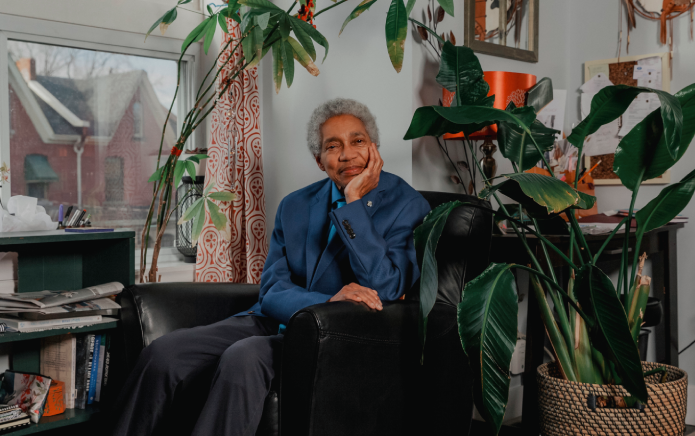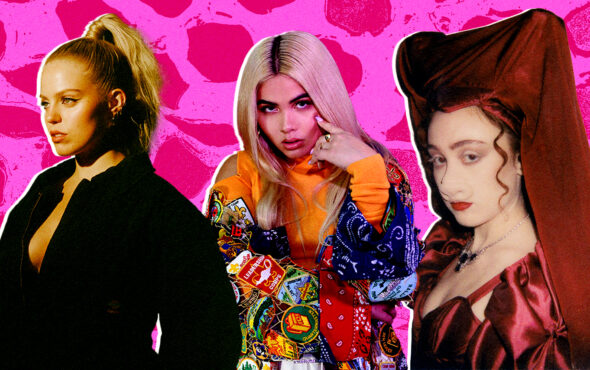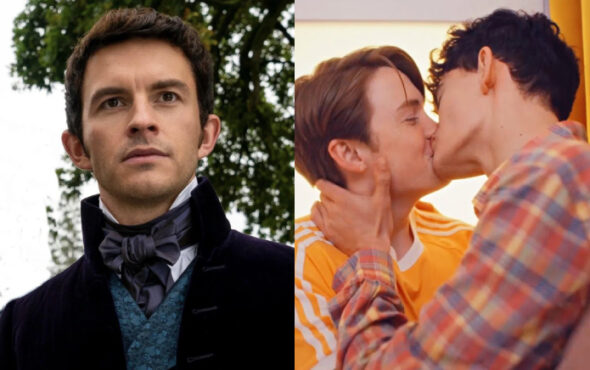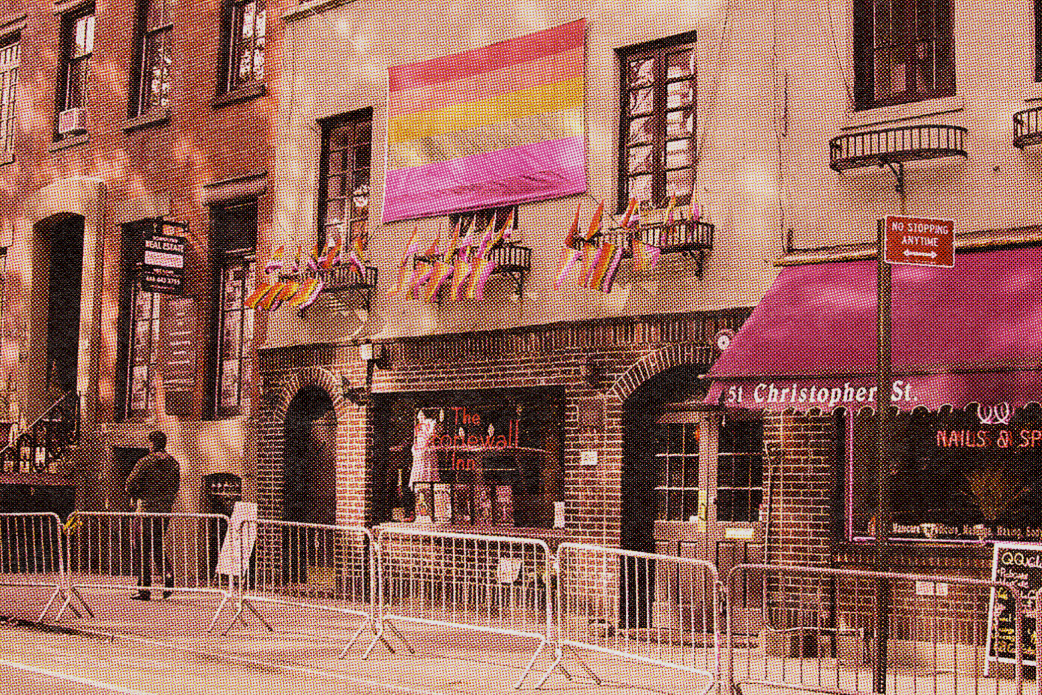
Not a single Pride Month goes by without mentioning the Stonewall riots of 1969. The famous Inn, located in Greenwich Village, New York, was a site of political struggle between the gay community and violent police who frequently raided the bar. Dubbed as kickstarting the gay rights movement across the globe, remembering Stonewall plays a central role in queer commemorations.
Sasha Misra of the Communications & Campaigns team at Stonewall, the UK LGBT rights organisation, explains the importance of the riot in the naming of their charity: “We are proud to take our name from such a pivotal and transformative moment in LGBTQ+ history. Just as the Stonewall protests in New York City were a response to persistent police brutality against LGBTQ+ communities in the 1960s, our own formation came in response to increasing political and social stigmatisation against LGBTQ+ people in the UK in the 1980s.”
Although the eponymous charity is correct in seeing the riots as playing a “pivotal and transformative” role in the liberation movements that occurred in the latter half of the 20th century, myths surrounding the Stonewall riots are commonplace, resulting in mass miseducation of LGBTQ+ history.
In a society where queer stories have been routinely marginalised, the notion of developing a queer collective memory is important in coordinating feelings of identity and unity within the community. However, constructing a collective memory is especially hard when the community’s stories have not been archived or preserved (obviously for reasons outside of their control). This is the case for the 1969 Stonewall Riots, where stories have been told that are pure mythology.
There’s a dominant narrative surrounding Stonewall that follows this pattern: the riots were a spontaneous showdown between the gays and the police, which in turn birthed the global gay activism of today. This narrative has snowballed into claims that it was trans activists of colour who kickstarted the riot.
I personally have issues with three prongs of this narrative which are 1) The Stonewall riots started the gay rights movement, 2) The riots were revolutionary for gay people everywhere and 3) Marsha P. Johnson / Sylvia Rivera / Zazu Nova started the riots.
1) The Stonewall riots started the gay rights movement
When discussing the history of the gay rights movement, pre-Stonewall life is a supposed apolitical wasteland where queer people rarely convened outside of socialising. Roderick A. Ferguson, an African American queer scholar, critiques the assumption that the gay participants in the Stonewall riots were “politically unseasoned actors driven by apolitical rage”, and are seen as “subjects who merely provided a steppingstone to a presumably more mature and single-issue gay rights politics”.
Stonewall did not bring sexuality into the ‘rights’ arena to sit alongside racial and gendered rights, but actually formed a part of the number of liberation struggles that occurred in the 60s and 70s. Asian American professor Martin F. Manalansan says to me, “one needs to locate Stonewall within the larger context of racial and women’s rights in the late sixties and early seventies. There was a prevailing radical ethos and a kinetic political atmosphere during this decade of a rapidly changing post-war.”
Sylvia Rivera, a prominent Latinx trans activist, has even reiterated this sentiment themselves: “All of us were working for so many movements at the time. Everyone was involved with the women’s movement, the peace movement, the civil rights movement. We were all radicals. I believe that’s what brought it around.” Stonewall didn’t birth gay politics, rather it was a manifestation of it.
In a similar vein, viewing the riots in this way erases the smaller-scale moments of community outreach and activism. Placing emphasis on the explosive stories in history and giving them the ‘spontaneity’ spin will make the average person believe that activism is down to luck, rather than political engagement. It serves to turn a carefully planned movement for social change into a spontaneous outburst based on frustration and anger.
The success of Stonewall is portrayed as miraculous, but things simply don’t happen that way. It is an insult to turn planned resistance into an instantaneous effort. Narratives surrounding Stonewall would be more useful if contextualised within a coherent, community-based social struggle.
Distorting history in this way is down to the individualistic mindset that’s integral in the reproduction of neoliberal ideals, which leads to complacency on our part. Failing to recognise the role of ordinary people not only misrepresents the actual history and understanding of the movement but suggests that, for ordinary people, making political change is a spectator sport. Surely, if the Stonewall riots were told in a more accurate light, wouldn’t we be more likely to picture ourselves as ambassadors for change?
Claiming that Stonewall was revolutionary or queer people everywhere is similar to white feminism’s ‘global sisterhood’ project and flattens what we mean by ‘queer’ the same way the idea of a ‘global sisterhood’ flattened ‘womanhood’.
2) The riots were revolutionary for gay people everywhere
In his criticism of the imperialist narrative surrounding Stonewall, Manalansan writes: “The textualization of Stonewall has changed from localized descriptions of a police raid on a Greenwich Village bar to globalized descriptions of a revolutionary moment for gays and lesbians everywhere.”
I spoke to Manalansan about this and he says, “I was conducting an ethnography of Filipino gay immigrants in New York City. Several of them arrived in the 60s and witnessed the series of arrests and police intimidation at the Stonewall Inn. At the same time, they were also subject to certain discriminatory practices where they were turned away from gay bars in Greenwich Village. Such experiences led them to question the idea of the Stonewall period as liberating.”
I also chatted with Jason Okundaye, culture writer and author of the upcoming book Revolutionary Acts: Stories of Love, Brotherhood, and Resilience from Black Gay Britain, and he echoed Manalansan’s thoughts: “It’s more important to recognise that the people most directly responsible for gay liberation were reactionary and bigoted. Fred Sargeant, for example, was one of four white co-founders of the first Gay Pride march in New York City in 1970, a year following the Stonewall riots in which he participated in. In 2020, amidst the resurgence of the Black Lives Matter movement, he described the police murder of black trans man Tony McDade as ‘a good thing for all,’ and is closely aligned to anti-trans LGB groups.”
Claiming that Stonewall was revolutionary for queer people everywhere is similar to white feminism’s ‘global sisterhood’ project and flattens what we mean by ‘queer’ the same way the idea of a ‘global sisterhood’ flattened ‘womanhood’. Placing queer people under one umbrella runs the risk of overlooking and ignoring differences between us and fails to consider the power structures that divide us.
Manalansan agrees: “LGBTQ people across the world may face varying challenges in their search for social recognition including gender, poverty, authoritarianism, hunger, etc. Because of this, we must face and take these varied realities very seriously since most of which were not part of the Stonewall historical events.”
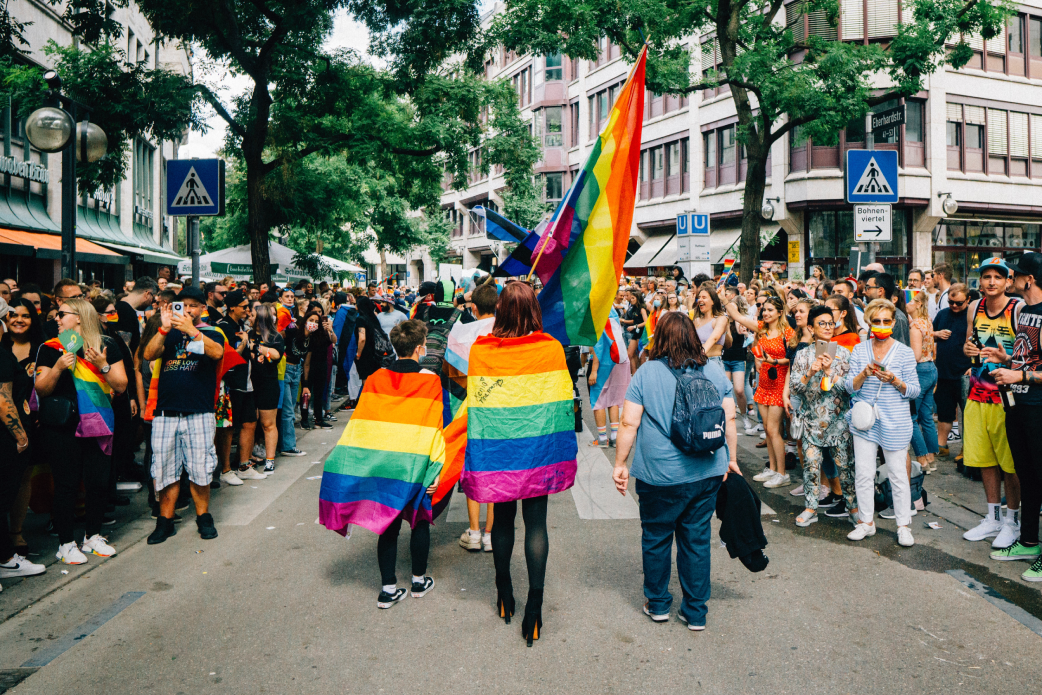
3) Marsha P. Johnson / Sylvia Rivera / Zazu Nova started the riots
To remedy the whitewashing and imperialism of Stonewall’s retelling, people have tried to give more spotlight to trans activists of colour like Marsha P. Johnson, Sylvia Rivera, and Zazu Nova. There is a constant reminder on social media that it was indeed Marsha P. Johnson who threw the first brick at Stonewall, and who should be credited as spearheading the gay liberation movement. Yet, Marsha said themselves that they were not present when the riots started, and multiple participants of the riot claim that no bricks were even thrown.
People have clung to this narrative because trans people of colour are already side-lined in queer history, and shaping the story in this manner transforms the Stonewall riots into a more inclusive tale of triumph. Okundaye says, “there’s a fetishisation of leadership – we want to imagine that it was sex workers and trans women ‘leading’ movements because we want to pay dues to those who have often been erased by mainstream narratives.”
Although with good intentions, the dominant story surrounding Stonewall online today is following the same fate as its predecessors – stories are being told not as they are, but as people would like them to be. I am annoyed that I first found out about Johnson’s existence through a connection to Stonewall that has now been rendered false, only to discover through research the number of achievements made by Johnson in their lifetime, which have been ignored by the masses in favour of the brick-throwing story.
It’s harmful to give figures more power in the story than they claim. Okundaye tells me: “Figures are often misrepresented and co-opted in service of broader agendas. Often the discourse around Marsha P Johnson imagines her as a singular saviour of a broader ‘queer’ community, and supposes that (white) queer people ‘owe’ their liberation to her. It’s a feel-good narrative which allows white queer people to see themselves as fulfilling their duty towards communities more marginalised by them by elevating and deifying a black trans woman who is no longer with us.”
Johnson, Nova and Rivera did a lot for themselves and their community outside of Stonewall and should be credited as such. Remember Johnson and Rivera for founding the Street Transvestite Action Revolutionaries (STAR) organization, for their work in rallies and marches, for helping homeless gay and trans youth. Remember Nova for being a founding member of New York Gay Youth. Claiming that one of them was the first person to throw a brick at Stonewall might be an earnest attempt to honour giants in the movement, but it simply isn’t true! These icons must be remembered in a way that feels honest because their legacies extend far beyond that night.
The proliferation of using social media as a tool for education and activism has exacerbated this obsession with seeing queer history as a singular, simplified story.
These three issues point to a larger issue surrounding the miseducation that’s rampant in the retelling of LGBTQ+ history. The journalist Gary Younge wrote in The Guardian: “We like our history neat – an easy-to-follow, self-contained narrative with dates, characters and landmarks with which we can weave together otherwise unrelated events into one apparently seamless length of fabric held together by sequence and consequence. Complexity, with all its nuances and shaded realities, is a messy business. So, we choose the facts to fit the narrative we want to hear.”
I call this a ‘textbook’ approach to history because, similar to a school textbook, we want to break down complex historical accounts into bite-size chunks, making them more consumable for the intended audience. Okundaye says: “I think embracing the complexity of queer history requires confronting the ugliness of it. We can’t simply choose to gloss over the mess of it all to create and project our wishful thinking on to history, it means that we fail to learn lessons about how liberation movements can carry forward.”
The proliferation of using social media as a tool for education and activism has exacerbated this obsession with seeing queer history as a singular, simplified story. The Twitter word limit, the rise of infographic activism on Instagram, and TikTok history lessons have led to us simplifying theory and history into catchy, brief statements. We are now in an era where we find simple stories to be more useful than complex accounts, which, as journalist Terry Nguyen says, makes some of us “worried about the long-term neutralising effect of making advocacy more digestible and consumable for a large audience.”
By restricting queer histories into one singular narrative, we end up flattening and mythologising icons and stories, while glossing over forms of difference. The only way we can move forward in society is by appreciating our history in its totality, recognising the good, the bad, and the ugly. So, how can we treat our history with respect, and ensure that we are being honest with both the mistakes and achievements of our past?
Okundaye has an excellent suggestion, “engage with oral history and listen to the direct testimonies of people who were present during these movements. Books like Let the Record Show: A Political History of ACT UP New York, 1987-1993 by Sarah Schulman is a good place to start.” Manalansan tells me, “look into local, national and regional histories to appreciate what communities have faced and continue to face in their specific geographical, cultural and political locations. We need to provide a space for these people to properly represent themselves within a critically global context without falling into the trap of homogenising and universalizing their struggles.”
